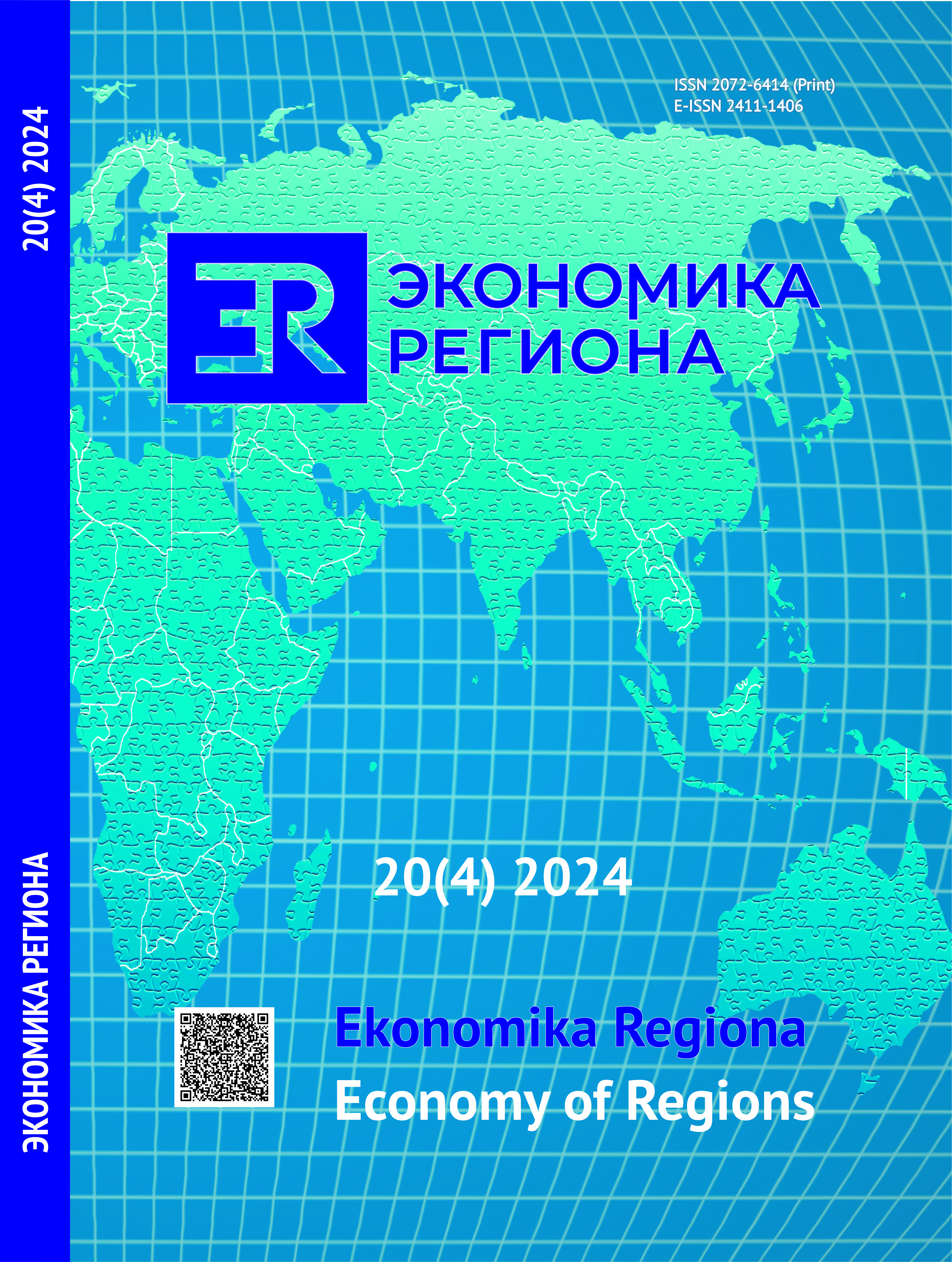Assessment of the Sustainability of Border Ecosystems under Geopolitical Challenges
DOI:
https://doi.org/10.17059/ekon.reg.2024-4-8Keywords:
entrepreneurial ecosystem, borderlands, regional ecosystem, entrepreneurial activity, sustainabilityAbstract
Interest in the problems of studying border ecosystems is caused by the fact that they function under the influence of both internal environmental factors and external macro – and meso-environment. Most studies in the field of the ecosystem approach in regional economics are theoretical in nature and are not supported by empirical analysis. The purpose of the article is to assess the influence of internal and external environmental factors on the sustainability of business ecosystems located in border regions. The methodology is based on the selection of ecosystems under study and the identification of their distinctive characteristics – emergence and cooperative competition. For assessment and grouping, methods of cluster analysis and principal components were used using machine learning in the Phyton programming language. As a result of the study, system-forming factors that are important both from the perspective of ecosystem theory and specific to the border state were identified and grouped; indicators have been formed that allow a comprehensive assessment of the influence of environmental factors on the sustainability of ecosystems; Four clusters were proposed and ecosystems were ranked by type of sustainability. Two classes of the most stable ecosystems with a high level of joint activity, located in favourable border conditions, have been identified. Most ecosystems are classified as unstable for two groups of reasons: the influence of geopolitical factors (66 ecosystems) and instability of the internal environment (65 ecosystems), which hinders their development. During the analysis of the principal components, ecosystems were grouped according to the integral sustainability score and key factors were identified (presence of large enterprises, cooperative ties between actors, foreign investments, import operations with friendly countries, institutional environment and border infrastructure). 47 stable ecosystems and 43 most unstable ones were identified. The results of the study are of practical importance for the development of strategies for the development of regional entrepreneurship, taking into account changes and adaptation to environmental challenges.
Downloads
Published
How to Cite
Issue
Section
License
Copyright (c) 2024 Якимова Вилена Анатольевна , Панкова Светлана Валентиновна

This work is licensed under a Creative Commons Attribution 4.0 International License.




